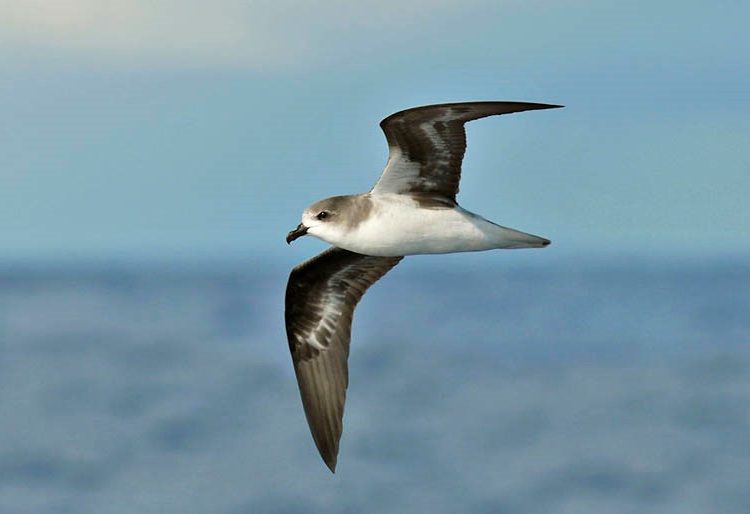Birdfinding.info ⇒ The endangered Zino’s Petrel has survived despite nesting only on Madeira because it nests in forbiddingly rugged terrain, and through conservation efforts to control predation by rats and cats. Described in 1903 and rediscovered in 1969, it went unnoticed in the intervening years in part because of its similarity to the Desertas Petrel, which nests on a nearby island. It is seen consistently in the waters around Madeira from March to September, and displaying pairs can be heard (and sometimes seen) evenings near its nesting area at Pico do Arieiro above Funchal from late March through August—especially May to July.
Zino’s Petrel
Pterodroma madeira
Breeds on Madeira and winters in the tropical Atlantic.
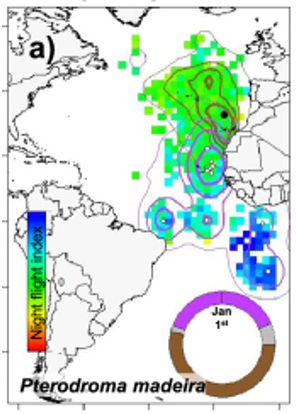
Zino’s Petrel confirmed location data. © Ramos et al. 2016
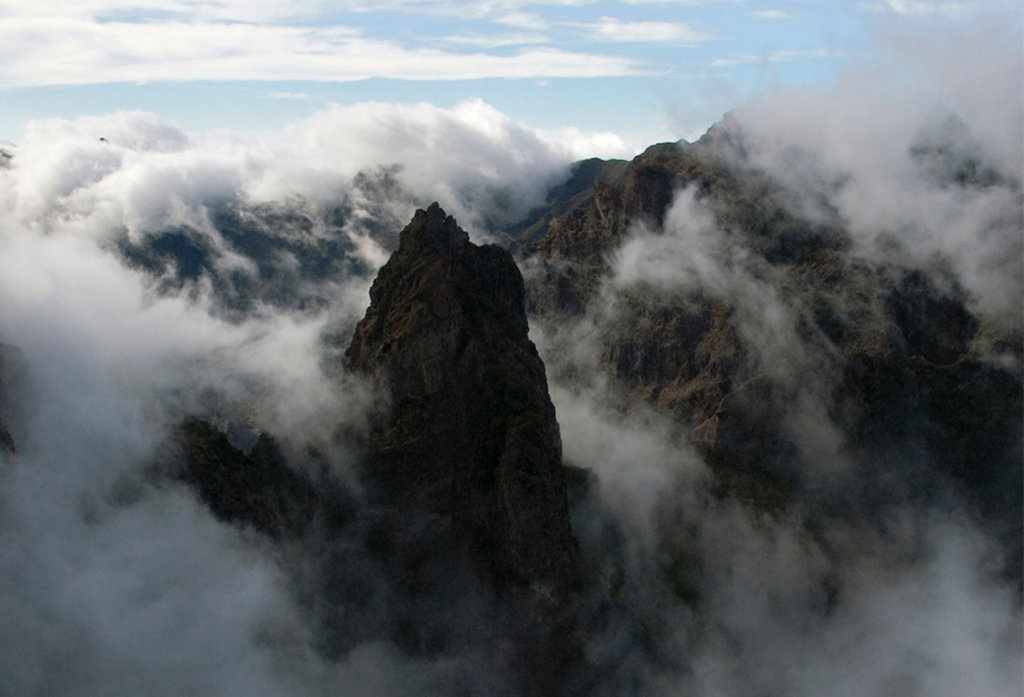
Zino’s Petrel nesting habitat at Pico do Arieiro, in the mountains of Madeira. © Jacob Gonzáles-Solís
Breeds from March to September on cliffs in the east-central highlands of Madeira above 1,600 m elevation. During the 2000s, the breeding population has been estimated at 50 to 80 pairs, gradually increasing except for a setback in August 2010, when a fire killed several adults and all but one of that year’s chicks.
Movements. Geolocator-based tracking studies of several individuals have found that this population is highly mobile. During the breeding season they forage across much of the eastern North Atlantic north to the upper latitudes of Scotland (~60° North) and west to the Grand Banks of Newfoundland. Most of the population apparently winters in the tropical Atlantic from equatorial waters northeast of Brazil southeastward to the eastern South Atlantic (e.g., waters of St. Helena) south to around 20° South).
There is a single well-documented record from U.S. waters: one photographed off of Cape Hatteras on September 16, 1995. Subsequent records have been inconclusive.
Identification
A mid-sized gadfly petrel with gray upperparts, white underparts, and dark wings.
Its most noticeable features are a gray partial hood, or cowl, blackish eye-patches, a white throat, a pale-gray rump and tail, a dark “M” across the back and wings, and mostly dark-gray underwings with contrasting white patagial wedges.
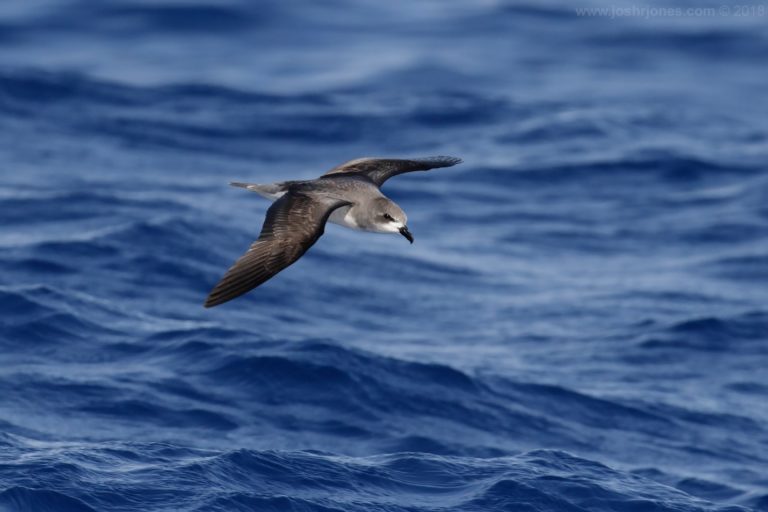
Zino’s Petrel. (Offshore from Madeira, Portugal; June 20, 2018.) © Josh Jones

Zino’s Petrel, showing exceptionally strong contrast between dark “M” on wings and back and mostly pale-gray upperparts, rump, and tail. (North of Madeira, Portugal; May 10, 2017.) © Peter Flood
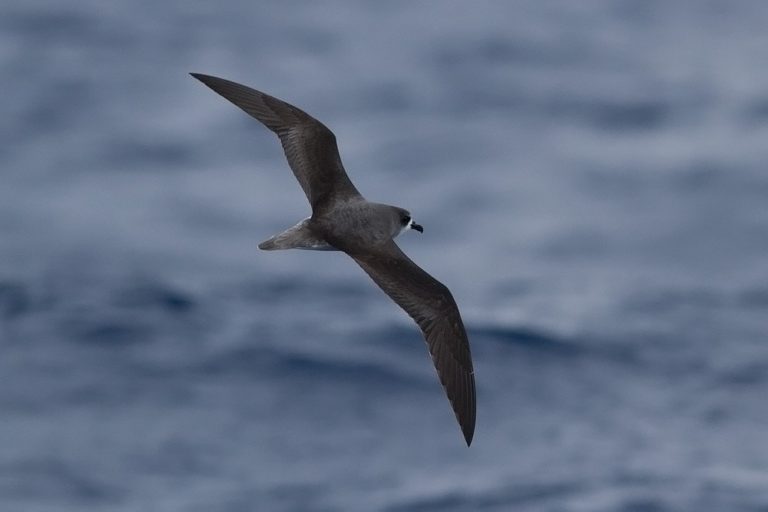
Zino’s Petrel, showing dark “M” on wings and back, and pale-gray rump and tail. (Offshore from Madeira, Portugal; May 31, 2011.) © Martin Lofgren

Zino’s Petrel. (North of Madeira, Portugal; June 6, 2011.) © Simon Colenutt
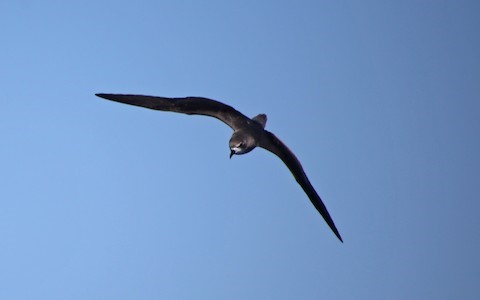
Zino’s Petrel. (Offshore from Madeira, Portugal; July 5, 2018.) © Paul Chapman
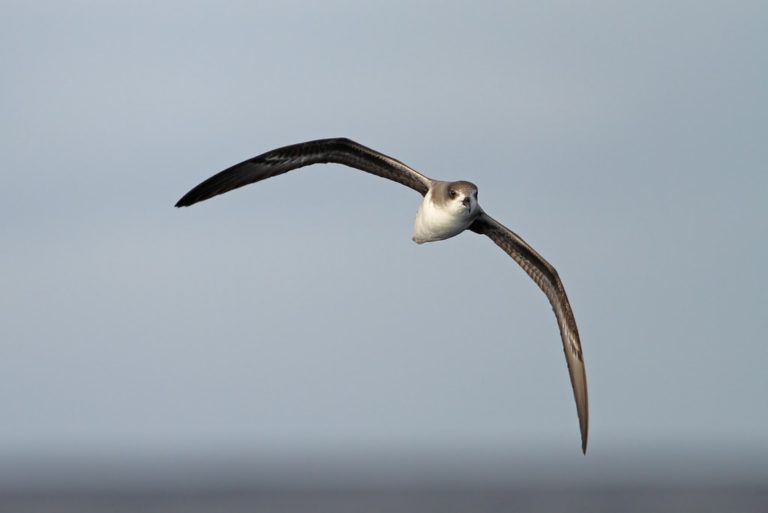
Zino’s Petrel. (North of Madeira, Portugal; August 4, 2011.) © Christoph Moning

Zino’s Petrel. (North of Madeira, Portugal; August 1, 2012.) © Olli Tenovuo

Zino’s Petrel, showing pale-gray rump and tail. (North of Madeira, Portugal; August 1, 2012.) © Olli Tenovuo
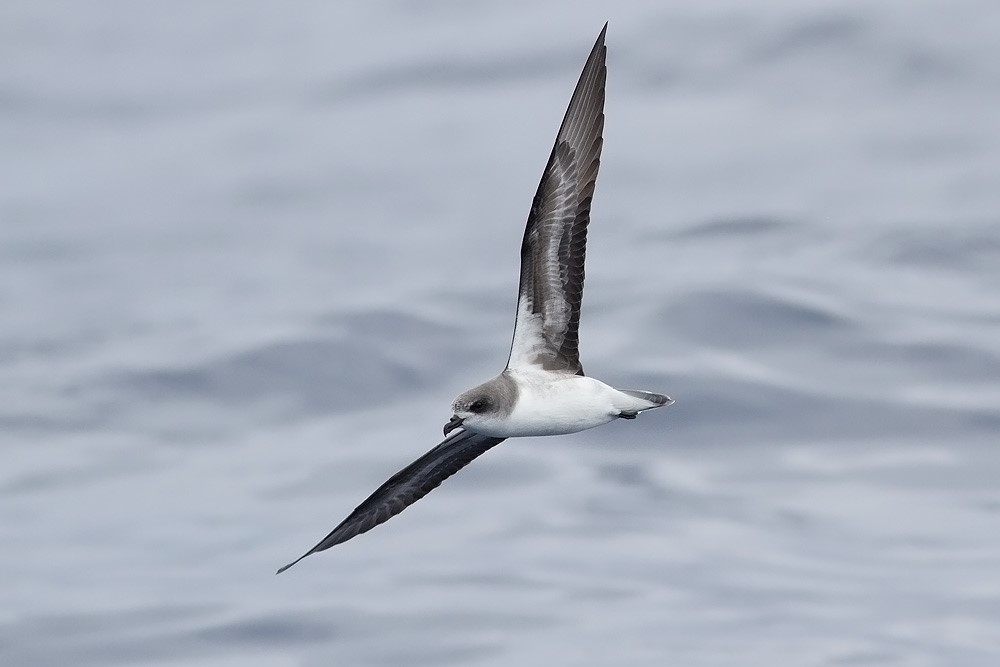
Zino’s Petrel, showing pronounced whitish central stripe on underwing. (Offshore from Madeira, Portugal; May 31, 2011.) © Martin Lofgren
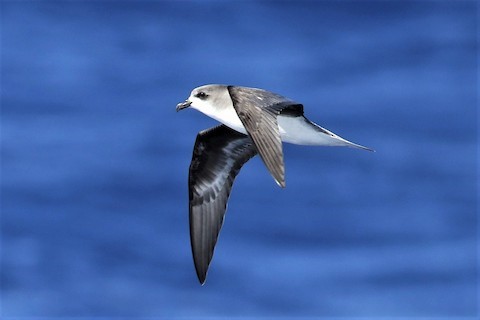
Zino’s Petrel, showing pronounced whitish central stripe on underwing. (North of Madeira, Portugal; May 10, 2017.) © Peter Flood

Zino’s Petrel, showing dark “M” on wings and back, and pale-gray rump and tail. (North of Madeira, Portugal; May 18, 2012.) © René Pop
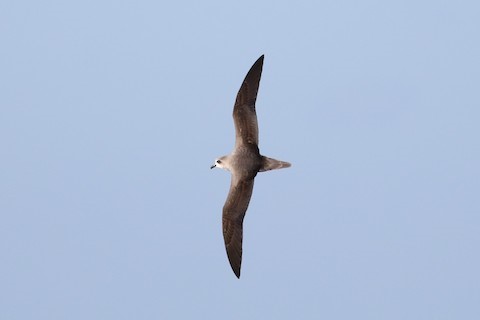
Zino’s Petrel, showing mostly dark wings contrasting with pale-gray back, rump, and tail. (North of Madeira, Portugal; May 9, 2017.) © Peter Flood
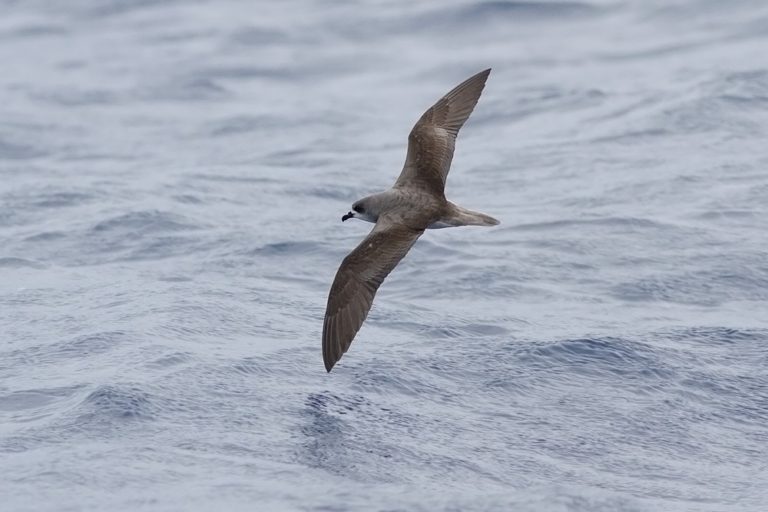
Zino’s Petrel, showing dark “M” on wings and back, and pale-gray rump and tail. (Offshore from Madeira, Portugal; May 31, 2011.) © Martin Lofgren
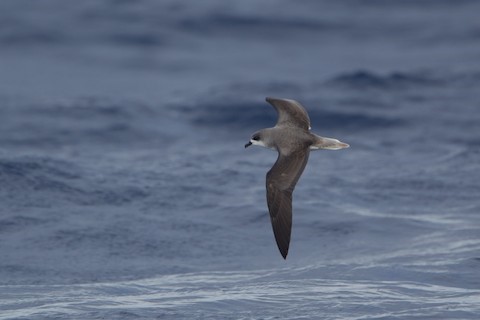
Zino’s Petrel, showing dark “M” on wings and back, and pale-gray rump and tail. (North of Madeira, Portugal; June 6, 2011.) © Simon Colenutt
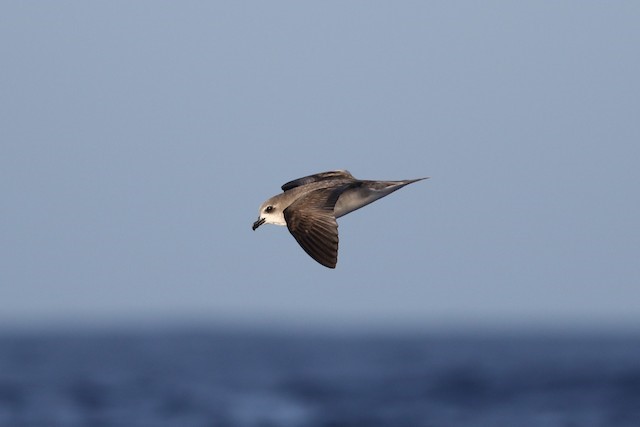
Zino’s Petrel, appearing to have mostly uniform pale-gray upperparts in this lighting. (North of Madeira, Portugal; May 9, 2017.) © Peter Flood
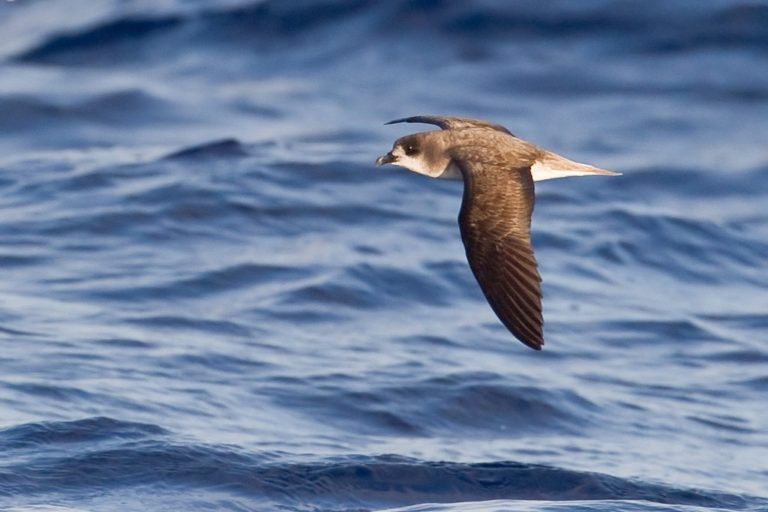
Zino’s Petrel, appearing brownish in this lighting, and showing pale-gray rump and tail. (North of Madeira, Portugal; August 1, 2012.) © Jukka J. Nurmi

Zino’s Petrel. (North of Madeira, Portugal; August 1, 2012.) © Olli Tenovuo

Zino’s Petrel, showing an extensive cowl and grayish feathering along the sides and flanks. (Offshore from Madeira, Portugal; May 31, 2011.) © Martin Lofgren
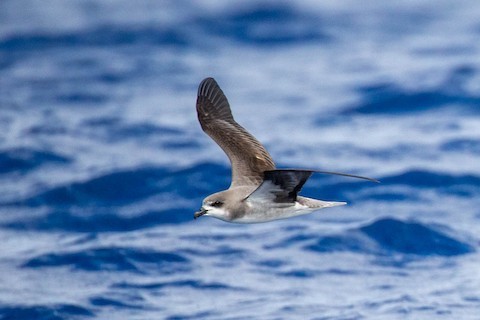
Zino’s Petrel. (Offshore from Madeira, Portugal; May 28, 2019.) © Luis Rodrigues

Zino’s Petrel, showing a thin whitish central stripe on the underwing. (Offshore from Madeira, Portugal; May 31, 2011.) © Martin Lofgren
Details of Zino’s’ underwing pattern vary but can be diagnostic in some cases. Overall, the underwing is dark-gray with a paler triangular patagial patch. Many (perhaps most) individuals show a contrasting, ragged whitish stripe through the coverts in the middle of the dark area—which differentiates them from the very similar Desertas and Cape Verde Petrels (see below). Zino’s is also somewhat smaller overall, slimmer, proportionately smaller-billed, and more “dove-headed” than the others.
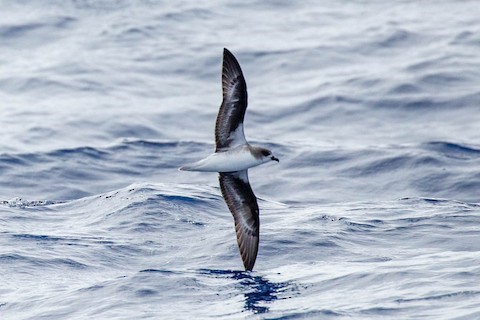
Zino’s Petrel, showing a whitish central stripe on the underwing. (North of Madeira, Portugal; May 28, 2019.) © Luis Rodrígues

Zino’s Petrel, showing a whitish central stripe on the underwing. (North of Madeira, Portugal; May 10, 2017.) © Peter Flood
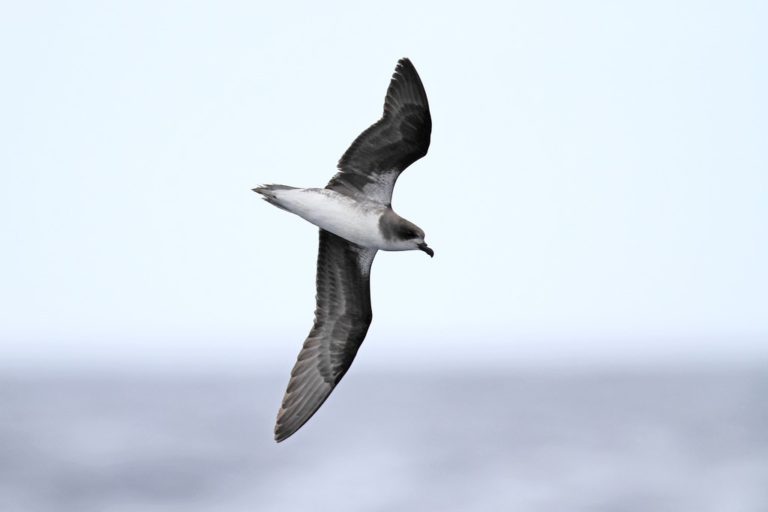
Zino’s Petrel, showing mostly uniform gray underwings, lacking a discernible central stripe. (Offshore from Madeira, Portugal; August 6, 2011.) © Christoph Moning
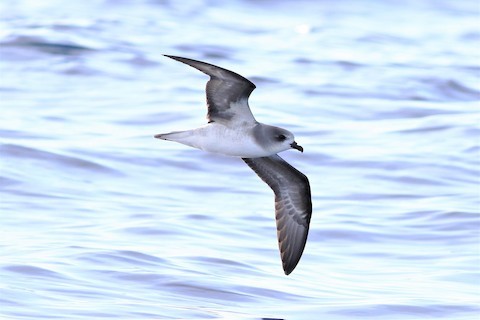
Zino’s Petrel, showing somewhat pale underwings in this lighting. (North of Madeira, Portugal; May 9, 2017.) © Peter Flood
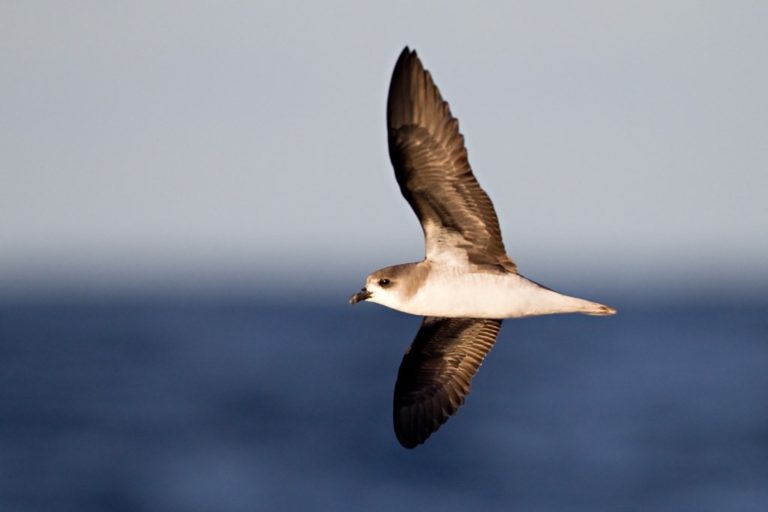
Zino’s Petrel, showing no discernible central stripe on the underwing. (North of Madeira, Portugal; August 1, 2012.) © Jukka J. Nurmi

Zino’s Petrel, showing no discernible central stripe on the underwing. (North of Madeira, Portugal; August 1, 2012.) © Olli Tenovuo
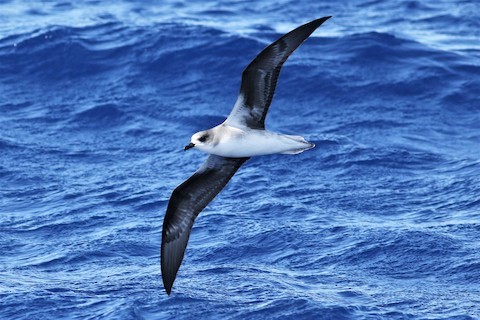
Zino’s Petrel, appearing unusually pale in this lighting, lacking a clear central stripe on the underwing. (North of Madeira, Portugal; May 10, 2017.) © Peter Flood
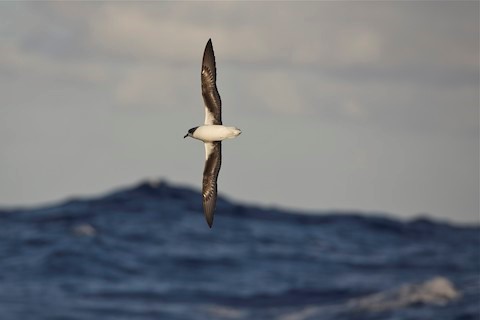
Zino’s Petrel, showing a partial whitish central stripe on the underwing. (East of Madeira, Portugal; June 20, 2012.) © Marc Fasol

Zino’s Petrel, showing a partial whitish central stripe on the underwing. (Offshore from Madeira, Portugal; May 28, 2019.) © Luis Rodrigues
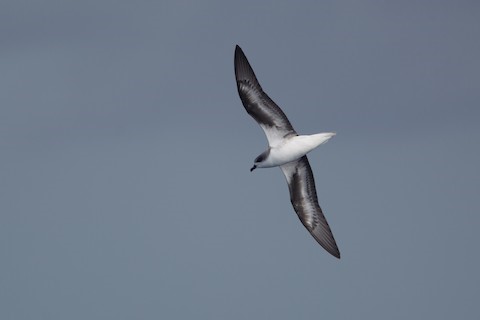
Zino’s Petrel, showing a strongly pronounced whitish central stripe on the underwing. (North of Madeira, Portugal; June 6, 2011.) © Simon Colenutt
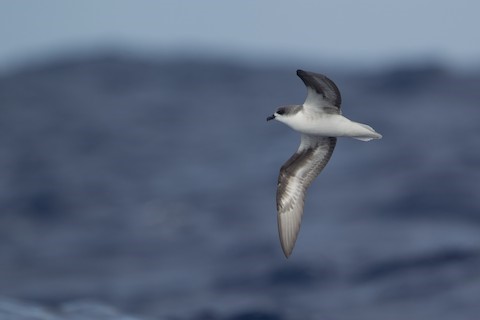
Zino’s Petrel, with a pronounced whitish central stripe on the underwing, but not showing contrast in this photo due to the lighting. (North of Madeira, Portugal; June 6, 2011.) © Simon Colenutt
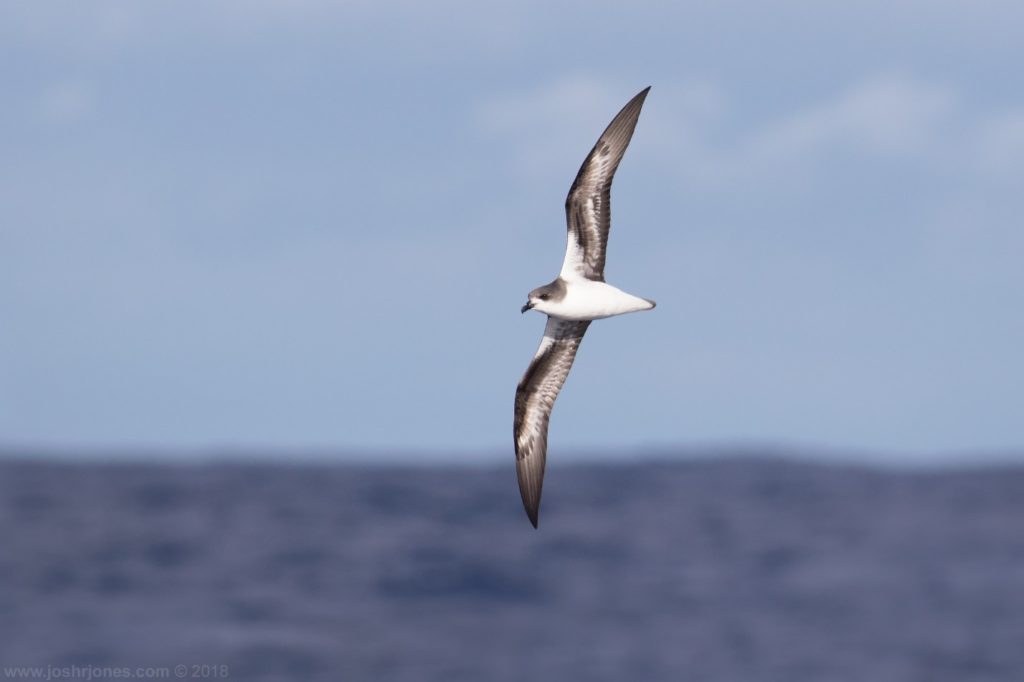
Zino’s Petrel, showing an unusually broad whitish central stripe on the underwing—resembling Bermuda Petrel. (Offshore from Madeira, Portugal; June 20, 2018.) © Josh Jones
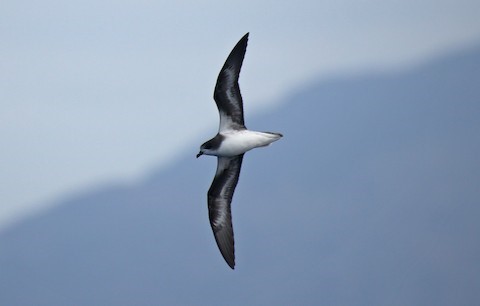
Zino’s Petrel, with a pronounced whitish central stripe on the underwing, and showing an exceptionally dark-looking cowl in this lighting. (Offshore from Madeira, Portugal; July 5, 2018.) © Paul Chapman
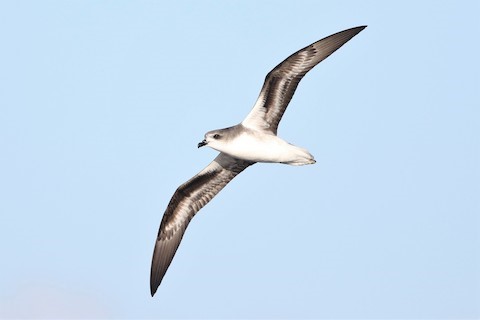
Zino’s Petrel, showing an unusually broad whitish central stripe on the underwing—resembling Bermuda Petrel. (South of Madeira, Portugal; May 12, 2017.) © Peter Flood
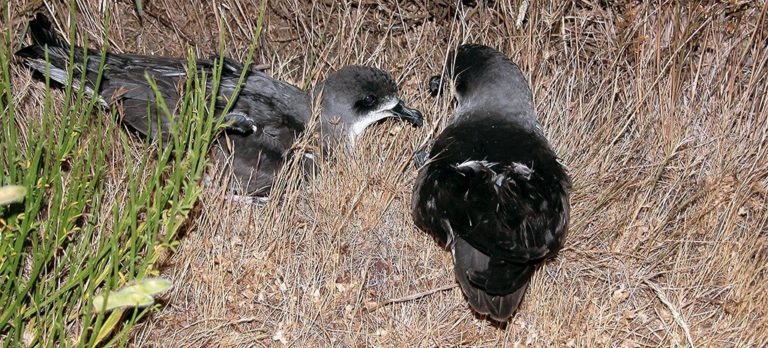
Zino’s Petrel, pair. (Pico do Arieiro, Madeira, Portugal; July 11, 2005.) © Frank Zino

Zino’s Petrel. (Pico do Arieiro, Madeira, Portugal; July 28, 2004.) © Frank Zino
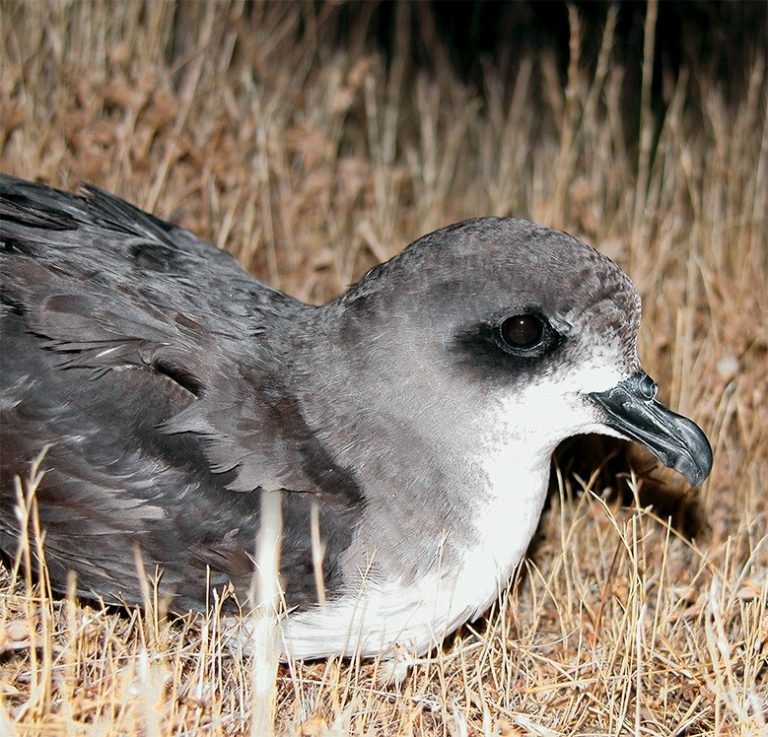
Zino’s Petrel. (Pico do Arieiro, Madeira, Portugal; July 28, 2004.) © Frank Zino
Voice. Calls heard at colonies are mournful, quavering moans and wails:
Cf. Desertas and Cape Verde Petrels. Desertas, Cape Verde, and Zino’s Petrels are very similar and have widely overlapping ranges: both Desertas and Zino’s have more extensive ranges that fully encompass Cape Verde’s known range. Most observations of individuals from this trio are at least somewhat ambiguous. Among the three, there is significant overlap in features and measurements. Nevertheless, Zino’s is often distinctive enough to identify with confidence.
Compared to Cape Verde and Desertas, Zino’s Petrel averages about 5-10% smaller in overall measurements (wingspan and total length), but 20-30% smaller in weight and bill length and depth, although it overlaps with Cape Verde at the margins. So Zino’s is slightly smaller in its outer dimensions, but proportionately slimmer and smaller-billed.
Zino’s also tends to have a paler head and more contrast on the underwings—often showing a whitish stripe down the middle of the wing (apparently never observed on Cape Verde or Desertas)—although plumage differences such as these are highly dependent on lighting and feather-wear.
Cf. Bermuda Petrel. Bermuda and Zino’s Petrels have several things in common. Both breed exclusively on islands at 32° North in the Atlantic Ocean—the only such islands, both of which are heavily visited by tourists. Both were rediscovered after being regarded as extinct, and have tiny populations in the midst of slow recoveries. They are approximately the same size and have approximately the same plumage patterns overall. They differ in two ways.
First, most reliably, Bermuda has a narrow white band on its rump and a darker tail, whereas Zino’s has an essentially uniform pale-gray rump and tail.
Second, Bermuda’s underwings have a striking bold black-and-white pattern, whereas Zino’s has mostly dark-gray underwings. However, many (perhaps most) Zino’s Petrels have a contrasting white stripe on the underwing, which readily differentiates them from Desertas and Cape Verde Petrels, but resembles Bermuda’s underwing pattern—and may therefore cause confusion in the identification of the two rarest seabird species of the North Atlantic.
Cf. Soft-plumaged Petrel. The Soft-plumaged Petrel of the southern oceans was traditionally considered conspecific with Zino’s, Desertas, and Cape Verde Petrels of the Atlantic Ocean. Desertas Petrel winters in the South Atlantic at latitudes where Soft-plumaged is very common, so they apparently overlap broadly, and Soft-plumaged was recently photographed in Norwegian waters, so it clearly has the potential to occur throughout the ranges of Zino’s, Desertas, and Cape Verde.
Soft-plumaged differs from the others in two principal features. First, soft-plumaged usually has a complete gray collar at the base of its throat, whereas the others have a gray cowl that rarely extends far down the sides of the neck. Second, on Soft-plumaged the rump and tail are approximately the same shade of gray as the upper back, whereas on the others the rump and tail are much paler.
In addition, Soft-plumaged usually has a mostly white forehead, whereas the others usually have gray foreheads—but forehead color seems to vary within each species to some extent. Finally, Soft-plumaged typically shows more extensive white or plae-gray on the underwings, usually extending to the bases of the primaries. In this respect, Zino’s can be similar, but usually has a whitish stripe limited to the coverts. Desertas and Cape Verde are more consistently dark-gray over the majority of the underwing.
Notes
Monotypic species. Formerly considered conspecific with Desertas (P. deserta) and Cape Verde Petrels (P. feae), collectively known as Fea’s Petrel (P. feae), which itself was previously regarded as a subspecies of Soft-plumaged Petrel (P. mollis).
IUCN Red List Status: Endangered.
References
BirdLife International. 2018. Pterodroma madeira. The IUCN Red List of Threatened Species 2018: e.T22698062A132622973. https://dx.doi.org/10.2305/IUCN.UK.2018-2.RLTS.T22698062A132622973.en. (Accessed October 8, 2020.)
eBird. 2020. eBird: An online database of bird distribution and abundance. Cornell Lab of Ornithology, Ithaca, N.Y. http://www.ebird.org. (Accessed October 8, 2020.)
Garcia-del-Rey, E. 2011. Field Guide to the Birds of Macaronesia: Azores, Madeira, Canary Islands, Cape Verde. Lynx Editions, Barcelona.
Garcia-del-Rey, E. 2018. Birds of the Canary Islands. Christopher Helm, London.
Harrison, P. 1983. Seabirds: An Identification Guide. Houghton Mifflin, Boston.
Howell, S.N.G. 2012. Petrels, Albatrosses & Storm-Petrels of North America: A Photographic Guide. Princeton University Press, Princeton, N.J.
Howell, S.N.G., and K. Zufelt. 2019. Oceanic Birds of the World. Princeton University Press.
Ramos, R., I. Ramírez, V.H. Paiva, T. Militão, M, Biscoito, D. Menezes, R.A. Phillips, F. Zino, and J. González-Solís. 2016. Global spatial ecology of three closely-related gadfly petrels. Scientific Reports 6:23447. https://dx.doi.org/10.1038%2Fsrep23447.
The Sound Approach. 2019. Zino’s Petrel, Pterodroma madeira. https://soundapproach.co.uk/species/pterodroma_maderia/.
Xeno-Canto. 2020. Zino’s Petrel – Pterodroma madeira. https://www.xeno-canto.org/species/Pterodroma-madeira. (Accessed October 8, 2020.)
